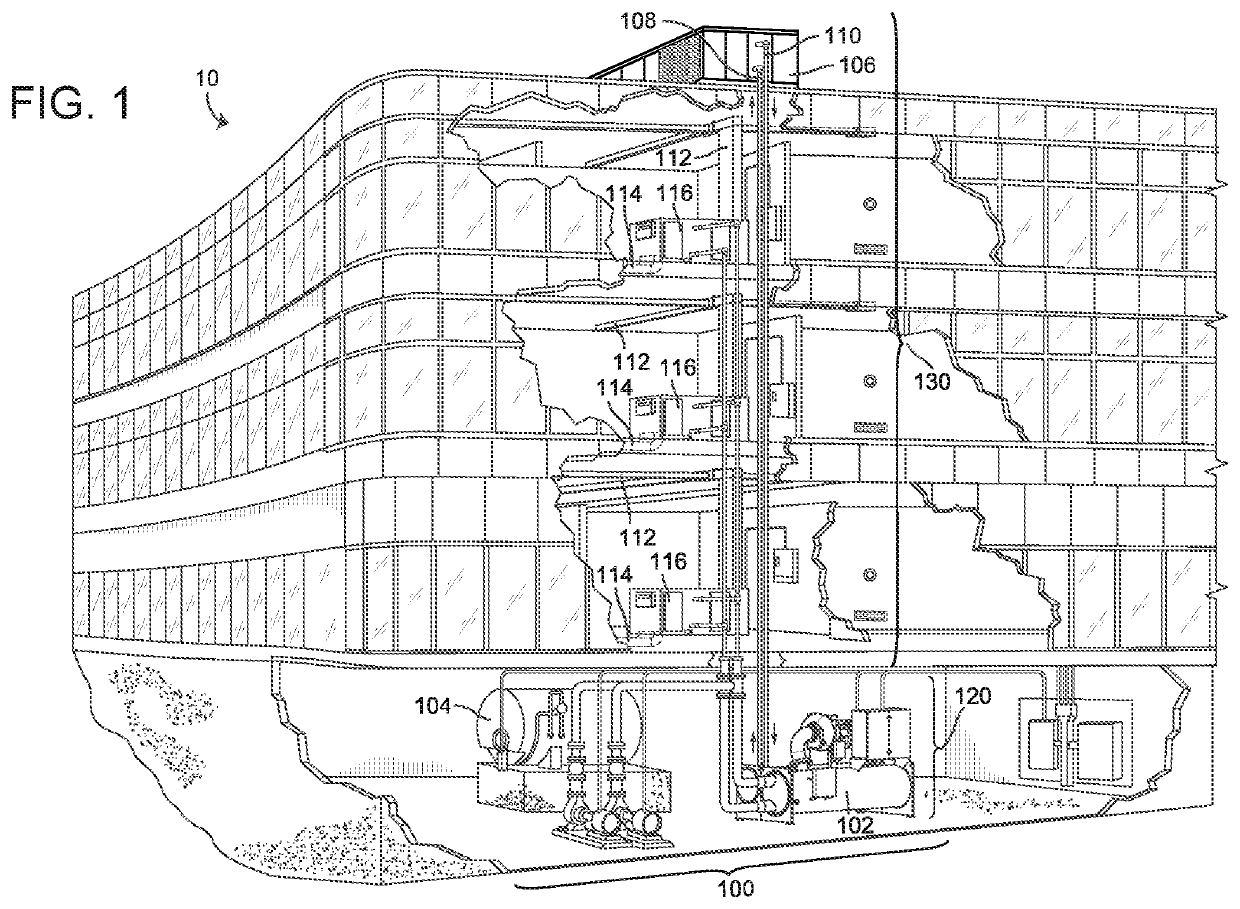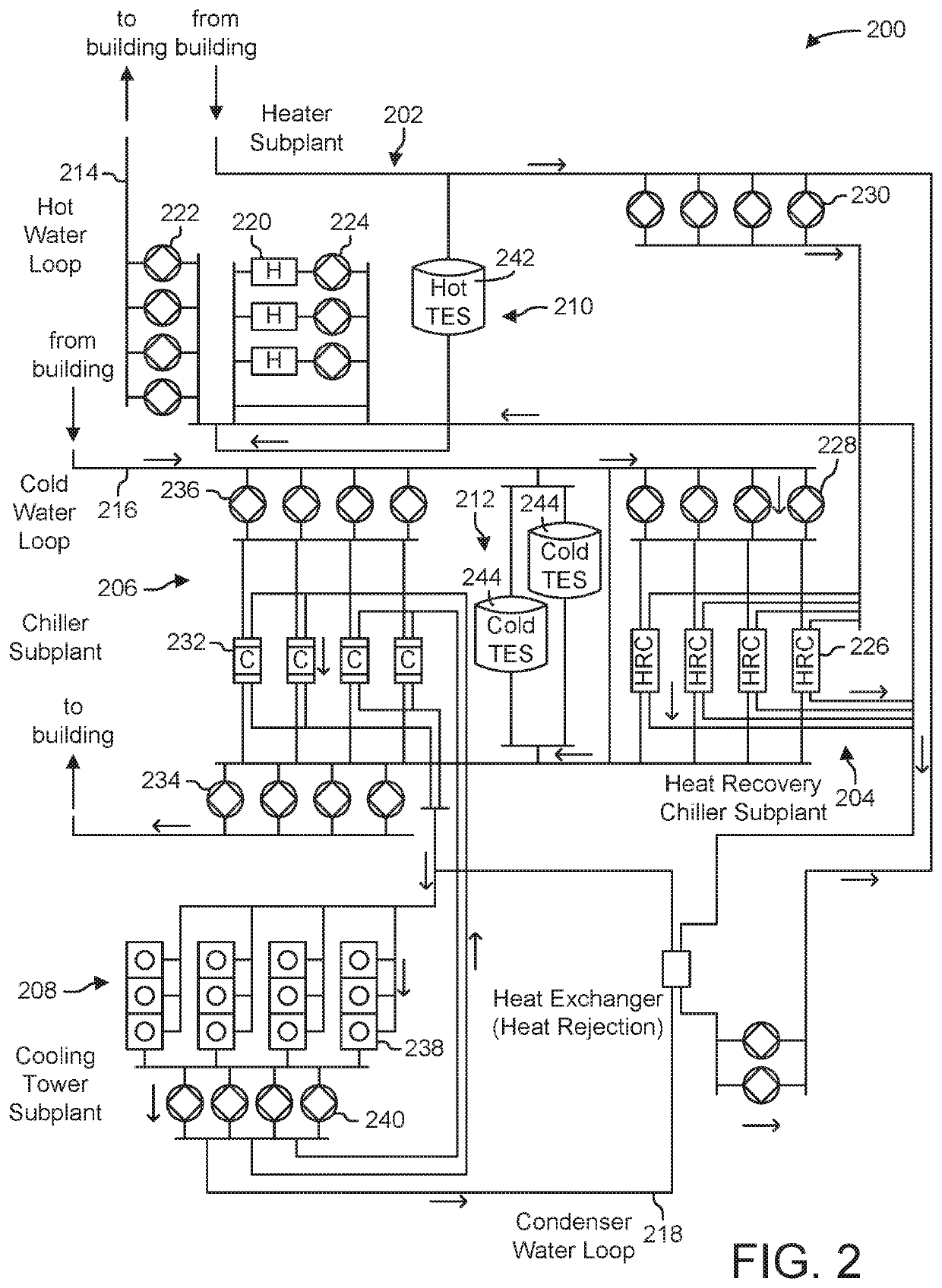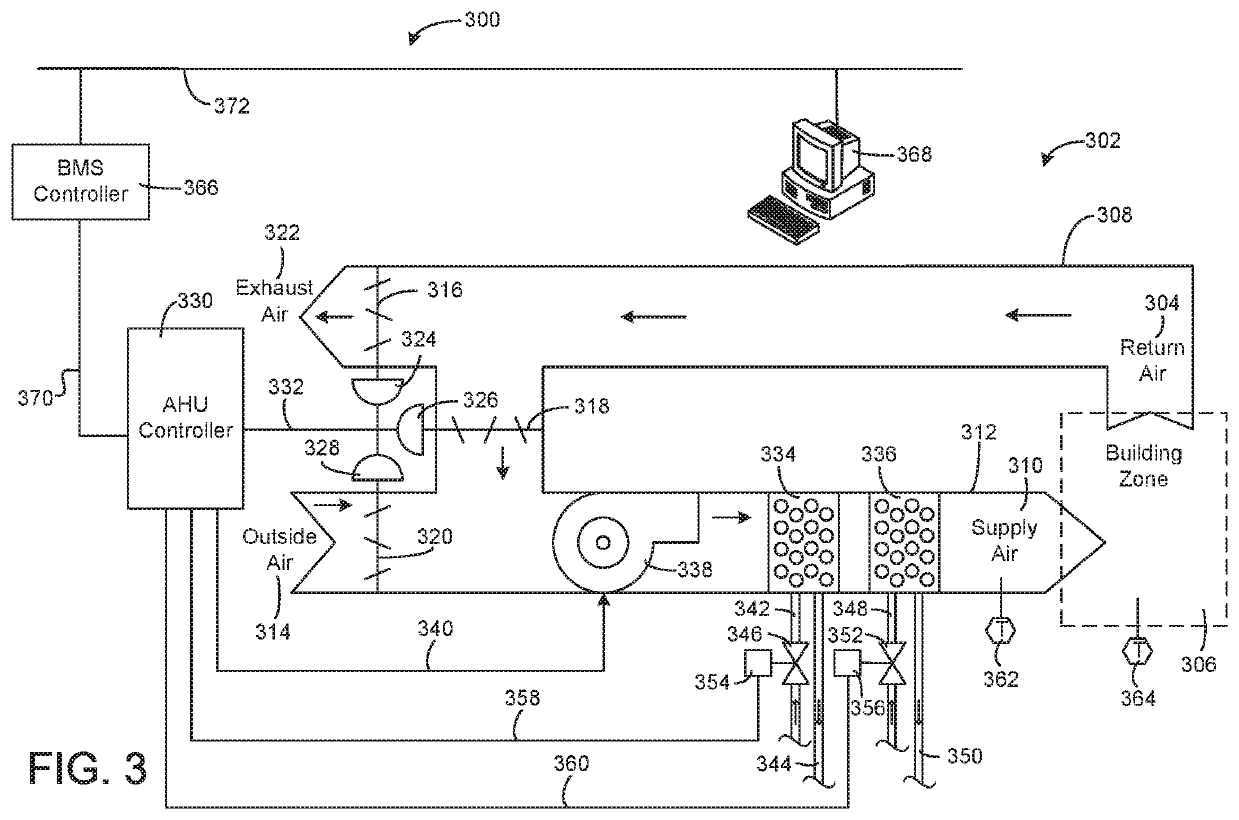Adaptive training and deployment of single chiller and clustered chiller fault detection models for connected chillers
- Summary
- Abstract
- Description
- Claims
- Application Information
AI Technical Summary
Benefits of technology
Problems solved by technology
Method used
Image
Examples
Embodiment Construction
Overview
[0041]Chillers are generally critical components of HVAC equipment in buildings and can consume about half of building energy consumption. As such, it is desirable to maintain chillers properly so as to ensure optimal functionality as well as ideal performance. In some instances even temporary loss of a chiller can lead to substantial losses including financial losses, losses of related HVAC equipment due to a malfunctioning or non-functioning chiller, as well as other potential losses including those associated with inefficient or incomplete operation. Such substantial losses from chiller malfunction and / or non-function such as may be experienced from a chiller shutdown present a desire for predicting chiller events such as shutdowns before they happen.
[0042]A chiller is equipped with numerous sensors capable of collecting a variety of data from chillers in real time in accordance with some embodiments. In some instances, this can aid in scheduling maintenance in advance of...
PUM
 Login to View More
Login to View More Abstract
Description
Claims
Application Information
 Login to View More
Login to View More - R&D Engineer
- R&D Manager
- IP Professional
- Industry Leading Data Capabilities
- Powerful AI technology
- Patent DNA Extraction
Browse by: Latest US Patents, China's latest patents, Technical Efficacy Thesaurus, Application Domain, Technology Topic, Popular Technical Reports.
© 2024 PatSnap. All rights reserved.Legal|Privacy policy|Modern Slavery Act Transparency Statement|Sitemap|About US| Contact US: help@patsnap.com










